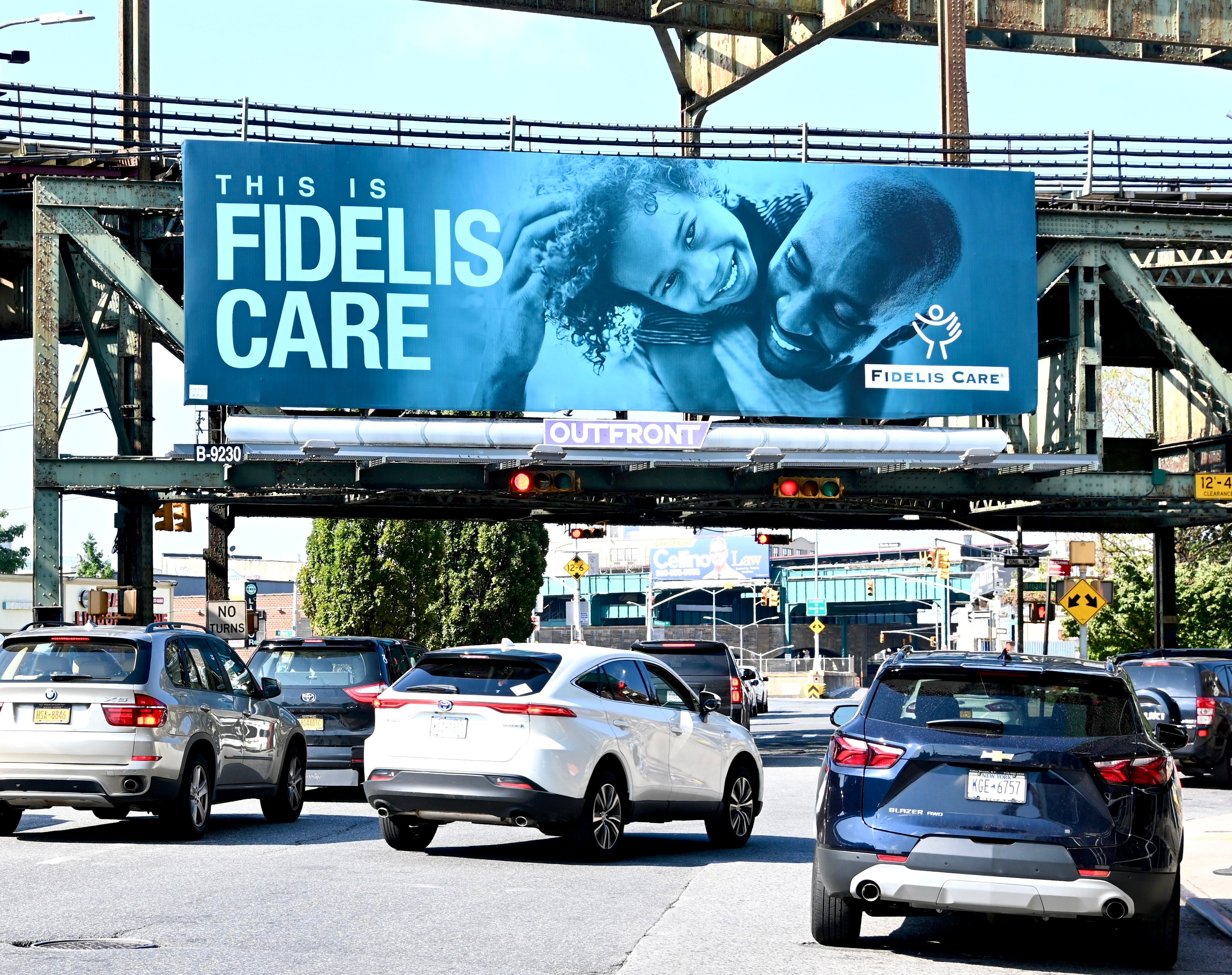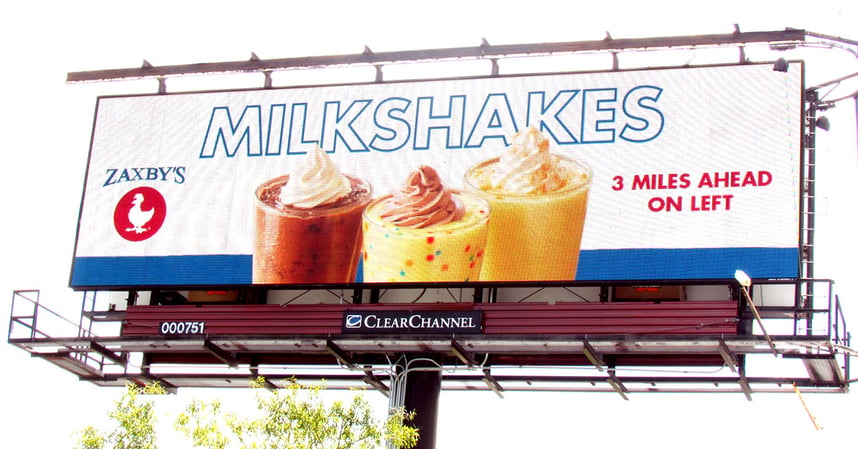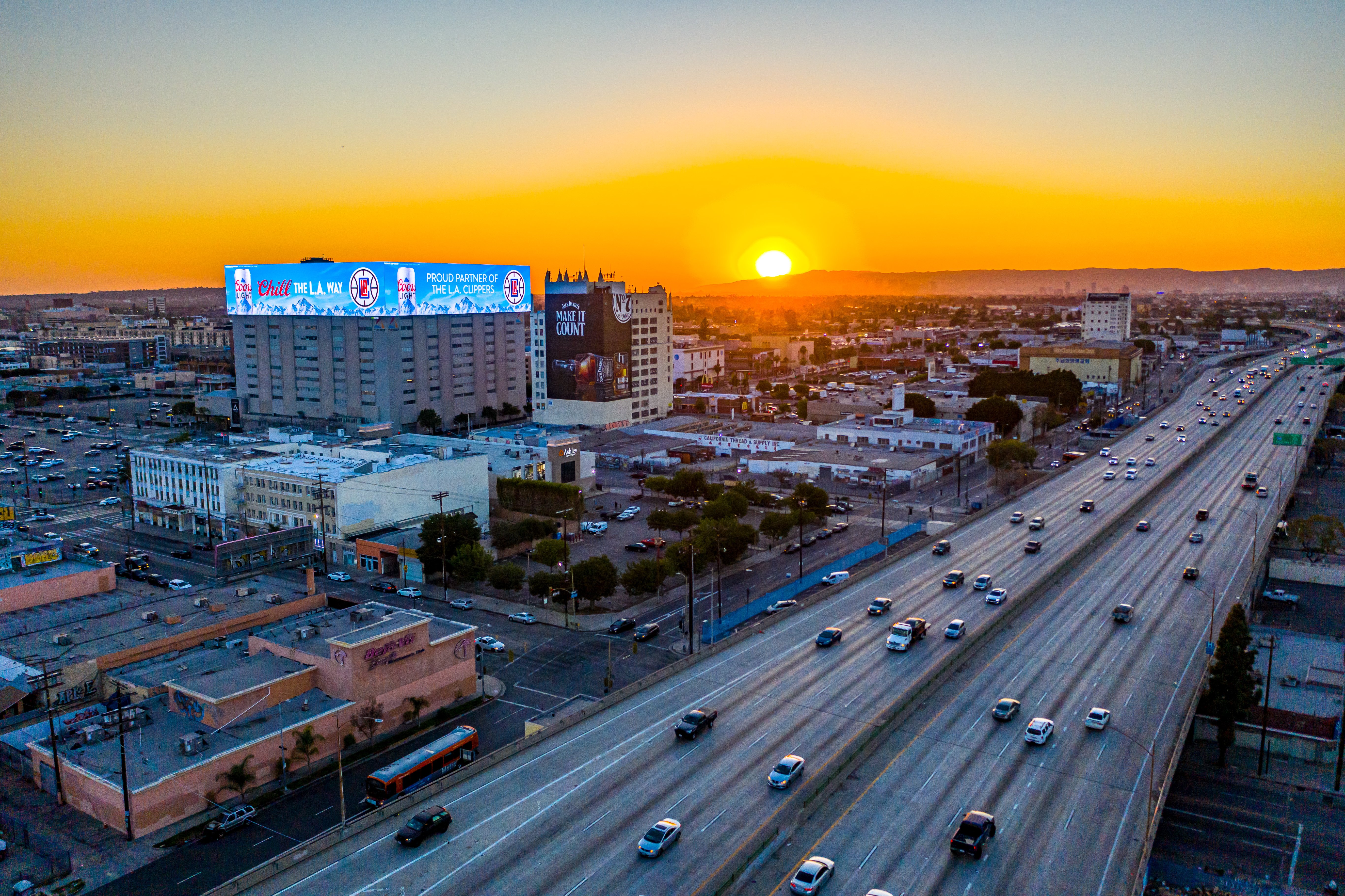
Out-of-Home ad spending has increased post-Covid, with advertising revenue rising 11% from Q3 2021 to Q3 2022. Although spending is up, we’re often asked, “How much does outdoor advertising cost and, more specifically, how much does it cost to get my ad on a Billboard?”
Economically, we are living in uncertain times. Generally, talk of a recession tends to put downward pressure on Billboard costs, but intense inflation (at a level where eggs are as valuable as gold), coupled with the post-COVID economic recovery, has worked to stabilize rates.
How these market conditions will affect the cost of Billboard advertising in 2023 remains to be seen, but depending upon the laws of supply and demand, Billboard’s location, and a myriad of other factors, there are ways to get a fair price for a Billboard that will yield a meaningful ROI from your ad spend.
In this article, we will consider not only the average cost of Billboards but why they cost what they do, the factors involved (some that will likely be new to you), and whether Billboards are worth their sometimes premium price tags.

Depending on various factors, billboard prices can vary significantly from a couple of thousand dollars to hundreds of thousands per four-week campaign. Many are quantitative (like size, weekly impressions, and illumination hours), but some are qualitative (like the perceived value of an area and how a Billboard appears as consumers approach it).
Typical Billboard costs can vary widely depending on the market. For example, in the U.S., a standard 14’ x 48’ Billboard in a metropolitan area averages from approximately $2,000 to $20,000 per 4-week period. In a more rural area, the average cost of a similar Billboard will be considerably lower, ranging from $1,000 to $5,000 per four-week period.
Want to know how your chosen market ranks in terms of its most premium OOH? Here’s a list of the most expensive U.S. cities to buy Billboard space and an estimated range of costs you can expect to pay per premium unit in each market. As you will see, even among the most premium assets, the average unit cost will vary widely.
It’s best to look at these prices as estimates or rough averages (the middle 80% of the bell curve if you will). To understand how much a Billboard costs or why it costs as much as it does in a particular locale, it’s essential to know how Billboard prices are determined in the first place. Working with an OOH Specialist who understands all of the nuances of OOH advertising can help you navigate whether you are getting a fair price for your campaign.
.jpg?width=3785&height=2996&name=3508915%20Centenne-Fidelis%20BC23%20New%20York%20B-9230%202022.08.292%20(1).jpg)
Many factors determine how much a Billboard will cost. Each factor feeds into a matrix of variables that ultimately dictate the contracted rate for a Billboard. Billboard prices are not standardized across markets or Media Owners, so providing cost estimates is an inexact science. To say how much influence certain factors will have on a Billboard’s cost is often highly subjective. However, we have a good handle on what makes the price of a Billboard go up or down.
Supply and demand for Billboards can be a bit complicated, but they are often the biggest drivers of cost. Higher demand, “popular” Billboards that tend to have a number of advertisers competing for the space can command higher prices than Billboards with historically lower occupancy rates. For example, if a unit hasn’t been sold in a while, then a media owner might entertain a lower rate than what they are willing to consider for a unit that is always sold out.
A media owner’s “occupancy rate” is the rate at which a set geography of Billboards (typically a city or “market”) is being rented by advertisers. The occupancy rate is calculated as the number of units sold divided by the total number of units. Healthy OOH inventories run at about 75-85% occupancy rate. Why not 100%? Inevitably, some units are obstructed to the point of being undesirable or even altogether unsalable. Media owners also experience a certain amount of “gapping” or frictional availability that occurs when the end of one campaign on a unit doesn’t perfectly align with the start date of the next campaign. These forces can make an occupancy rate of 85% feel like “sold out” conditions.
Zooming out to the market level, if a media owner’s inventory is experiencing generally low occupancy rates, then it’s a signal that the rates with which they have been going to market are out of line with what the market is willing to pay. In such a scenario, media owners tend to get more creative regarding discounts and value-added media.
In the case of perm units or long-term Billboard campaigns in popular areas, once an advertiser releases a unit, it can be hard to get it back. This waiting list of would-be advertisers gives the Media Owner the power to increase the unit’s rate. Taken to extremes, these increases can push longstanding advertisers off certain units in favor of backup contracts with higher rates.
That covers “demand,” but what happens when supply is affected? Many major municipalities have stringent ordinances to “cap-and-replace” or restrict the addition of new OOH inventory altogether. In Texas, for example, Media Owners are losing units due to new real estate developments and road-widening projects. Often, these units are located along some of the most valuable stretches of right-of-way in the market, and their loss creates upward pressure on the rates a Media Owner needs to charge to remain profitable.
In general, Billboards in high-traffic, densely populated areas cost more than Billboards in rural, less-populated areas. Beyond that, certain markets generally command higher rates than other markets. If a market has few media owners, then rates can be higher. Less competition between media owners in a market can mean a higher pricing model. Even within markets, depending upon a Billboard’s specific location, two Billboards with nearly identical attributes can be set at dramatically different rates.

An excellent example of this is seen in the Los Angeles market when you compare units along The Sunset Strip to units that are the same size and reach the same number of weekly impressions on Beverly Blvd. “Sunset” units go for 5-10x the rate of “Beverly” units for no other reason than “Sunset” carries more allure than Beverly (no offense to Beverly, of course).
All other variables being equal, larger units, such as Bulletins and Wallscapes, will cost more than smaller units, such as Posters. This seems obvious at first glance, but the reason concerns a unit’s perceived “impact” or “wow factor.” Bigger is often better when it comes to OOH advertising.
Easy-to-see Billboards without visible obstructions typically come at a higher advertising cost than similar Billboards that have something interrupting their viewshed. Just about every Billboard company manages “unsalable” units that will never be sold due to severe obstructions (vegetation, buildings, on-premise signs, etc.), streets being converted from two-way to one-way traffic, or property access issues beyond the Billboard owner’s control. Market rides and inventory knowledge is often needed to identify these challenges or take advantage of possible lower pricing.
Longer Billboard campaigns will reduce the rate of the unit(s) being contracted. A typical discount of 5-10% is realized when an advertiser commits to an annual (52-week) duration. Another way to get more value from your OOH advertising campaign is to buy in bulk. The larger the buy, the lower your average cost per unit should be.
Billboards can come in an array of formats and sizes. Digital Billboards (also sometimes referred to as “electronic billboards” or “LED billboards”) usually display ads on a rotation of 6-8 advertisers.
-1.jpg?width=7168&height=4733&name=Friends%20of%20the%20Children_Digital%20Bulletin%20(1)-1.jpg)
To purchase all of the spaces in a rotation and have a 100% share of voice (SOV) on a Digital Billboard will likely cost 4-6x more than a static Billboard with similar specs. Many brands and small businesses use Digital Billboards to break into the outdoor advertising space partly because buying a reduced SOV vs. the 100% SOV that comes with a traditional static Billboard tends to cost less. It also doesn’t require the additional production costs associated with printing a physical vinyl ad.
The costs associated with designing and producing Billboard ads will also factor into the overall cost of your advertising campaign.
Costs for creative services will vary significantly depending on whether you are using a creative agency, hourly freelancer, or designing the billboard ad yourself. If the Billboard ad requires a lot of creative elements, such as custom illustrations or 3D build-outs, then it will be considerably more expensive to design and produce than a simpler, 2D Billboard ad.
Complexity in design can also affect the cost of printing and installing a static Billboard. Extension build-outs are commonly priced per square foot and can also require additional installation costs. For Digital Billboard campaigns, you will save on production, but additional design costs may be necessary if an advertiser hopes to capitalize on the growing popularity of 3D Digital OOH (DOOH).
.jpg?width=3000&height=2250&name=NYCD-350_Woolmark_9_8_22%20(27).jpg)
Similarly, production costs can increase or decrease depending on the materials used, the size of the Billboard, and whether a Billboard ad incorporates embellishments (extensions, inflatable components, or custom lighting). Pricing can also depend on the availability of Billboard materials, with a lack of availability causing prices to go up.
Installation costs can vary depending on how the Billboard owner is required to access the location, the type of Billboard, and whether specialized equipment, teams, or permits are required for the installation. If an installer is required to use an outside union shop, then costs are higher than if the installers work directly for the media owner. For Digital LED Billboards, there is no print production or installation involved so you can leave creative services as your only additional cost consideration.
The Media Owner owns the OOH structure but usually not the land upon which the structure is located. More often than not, they are renters and a lease agreement with the landowner dictates the rent they pay. How a lease agreement is structured can impact the rate that a Billboard company needs to charge for a structure to deliver a healthy ROI.
As with advertising costs, leasing costs are often driven by how valuable or in-demand a location is expected to be. The more coveted the property, the more concessions a landowner can require from the Billboard company. Most lease agreements call for fixed monthly payments to the landowner. However, there are times when a landowner will forgo those regular payments in exchange for a revenue-sharing interest in a structure. “Rev-shares” require the media owner to pay a specific percentage of the gross revenue generated by a structure to the landowner on a monthly, quarterly, or annual basis. This percentage can sometimes create a higher break-even point for the media owner, thereby forcing rates to be higher and less flexible.
These are just some of the most common factors determining OOH advertising costs. They are interrelated in many ways, and you can understand why it’s not easy to answer someone who asks, “What does a Billboard cost?” However, working with an experienced OOH Specialist who understands the nuances of your target market(s) and target audience(s) can help you to negotiate a fair price for an impactful campaign.
Though Billboard campaigns can be expensive depending on the market and other cost factors, they are an excellent investment for a brand that wants to raise awareness and drive conversions. According to a November 2022 survey by the Out of Home Advertising Association of America (OAAA) and Morning Consult, 88% of US adults notice OOH ads, and 78% of those viewers are inspired to take action.
OOH advertising organically reaches consumers by influencing them while en route. OOH has higher net favorability than all forms of digital media, radio, podcasts, and streaming audio. In this poll, Billboards were considered the most favorable ad type.
Billboards also complement digital advertising campaigns, with 76% of those surveyed saying they had used a mobile device to learn more about a product featured in an OOH ad. Beyond driving traffic to websites, OOH encourages social media sharing, with one in seven viewers sharing an OOH ad.
.png?width=3840&height=1770&name=image%20(82).png)
OOH and Billboards also drive in-store traffic. Of those who had recently noticed an OOH ad that gave directions to a business, nearly half visited the physical location within 30 minutes of seeing the ad, and 78% of those visitors went on to make a purchase.
Though Billboards come at a cost, understanding the cost factors involved can help you to make decisions that will fit your budget and provide a valuable ROI. Considering Billboards as part of a multi-channel campaign strategy or in conjunction with other OOH formats can further amplify their effectiveness and maximize their value.
Billboard advertising can be an excellent option for reaching a large audience and making a significant impact. They also complement other OOH formats and campaign mediums to amplify your message. If you’re considering using Billboard advertising in your next campaign, reach out to our OOH specialists at Billups, and we’ll help you identify the most effective OOH strategy to support your goals.
Don't worry—we won't share your information.